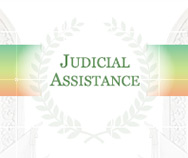Courts eye a more tranquil environment
The Noise Pollution Prevention and Control Law, which was enacted on June 5, provides a stronger legal basis for preventing noise pollution, on top of the injunction and preservation measures in ecological environment infringement cases enabled by the Supreme People's Court (SPC) on January 1. The pre-litigation injunction against a noise nuisance issued in April by the Haizhu district people’s court in Guangzhou, capital of South China’s Guangdong province, was the first of its kind in China and has demonstrable significance for the application of related laws.
The SPC recently took questions from media concerning the courts' measures in response to noise-related disputes, the reasons behind the Haizhu court's noise injunction and its significance, the functions of the injunction provisions as a preventive measure and how injunctions should be regulated.
According to statistics, noise nuisance ranked second in 2020 on the national management platform for ecological environment complaints, only next to air pollution related complaints. The people's courts have striven to address this issue and taken such measures as giving full play to pre-litigation mediation, trying every case impartially and in strict accordance with the law, intensifying surveys and research to respond to new challenges, releasing typical cases for demonstration purposes and carrying out publicity activities to improve social awareness.
With the implementation of the new injunction provisions, courts can issue injunctions to stop noise pollution before or during litigation. The noise injunction issued by the Haizhu district court was an application of the provisions and an innovative move to support ecological environment protection.
In the said case of Haizhu district, the soundtrack played by the offender severely impacted the applicant's life and thus qualified as noise nuisance.
The injunction preservation measure is a temporary relief measure applied by the people's court to stop the offender's ongoing or imminent acts of polluting and damaging the ecological environment in a timely manner, and to avoid irreparable damage to the applicant's legitimate rights and interests or the ecological environment.
In the said case, the offender's behavior qualified as "an ongoing act of polluting and damaging the environment". However, the noise emission did not exceed the national standard, which means that without the new provisions the applicant’s legitimate rights and interests could not be guaranteed based on the Civil Code and the noise pollution prevention and control law at the time. The applicant would suffer "irreparable damage" if the offender's behavior was not stopped in a timely manner, a situation justifying the injunction provisions. The court therefore issued the noise injunction to stop the damage and effectively protected the applicant's rights.
This injunction was significant in that it made clear the environment injunction provisions can be applied to noise nuisance, that before the enactment of the new noise pollution prevention and control law, the injunction provisions could apply where the noise emission did not exceed the national standard but caused severe harm, and that it expanded the application scope of preventive judicial measures and helped to stop the pollution at its source and effectively prevent or mitigate harm thereof.
The issuance of the injunction provisions filled the gap between the old and the new noise pollution prevention and control legal frameworks where "noise that is not loud enough but has damaging impact" could be stopped in a timely manner. In the new law, the noise emission level is no longer listed as the standard for civil liability. The injunction provisions serve as a preventive judicial measure to stop the occurrence or expansion of harm to the environment. They are applicable not only in the pre-litigation phase, but also during a litigation.
In terms of regulating injunctions, the application of an injunction is conditional on the severity and irreparability of the damage and equal consideration should be given to both the applicant and the respondent regarding their rights and interests. Moreover, an injunction has its term of validity. For a pre-litigation injunction, if the applicant does not file a suit after 30 days, the injunction will become null. In addition, injunctions as a temporary relief measure aim to stop the nuisance in a timely manner to avoid further harm. It suffices if the damage is stopped or the applicant files a suit to further protect their rights and interests. If the circumstances under which the injunction was made have changed, the applicant, the respondent or a related party can apply to the court for an order to lift the injunction, which will be handled accordingly.









